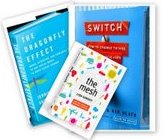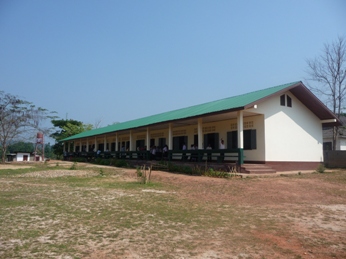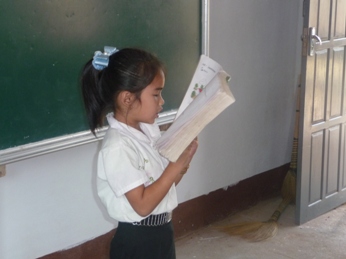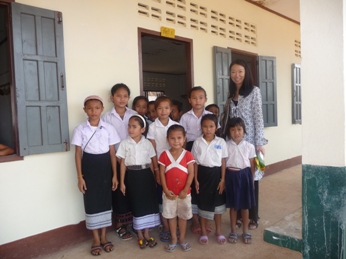
My favourite books this year may seem a bit biased geographically as all authors are living in California.
–Switch-How to change things when change is hard– by Chip Heath and Dan Heath
–The Dragonfly Effect -quick, effective and powerful ways to use social media to drive social change by Jennifer Aaker and Andy Smith
–the Mesh -why the future of business is sharing– by Lisa Gansky
I was very fortunate to have been able to attend the lectures of Chip Heath and Jennifer Aaker when I participated this summer in the Stanford GBS Executive Program in Social Entrepreneurship (EPSE). Both are remarkable lecturers and their books are fun, effective, full of amazing examples and inspiring. Switch is about how we can effect transformative changes by understanding the two competing systems; the rational mind and the emotional mind. The Dragonfly Effect is a how to guide on driving social change (by using social media). I picked up Lisa Gansky’s book, the Mesh, while attending SOCAP10 in autumn. The Mesh explains one of the “big ideas” or one of the most important trends that is shaping new businesses logic providing products and services through sharing.
Happy reading!
Category Archives: innovative partnerships
The microcredit crisis in Andra Pradesh, India
The microcredit crisis in India has been unfolding since mid October when the state of Andra Pradesh issued an ordinance to crackdown on microlenders. The ordinance required that all microlenders cease disbursing and collecting loans, register to the authorities and declare the interests charged. The state was concerned with the explosive growth of loans and around 50 suicides reports by rural men and women that were attributed to overindebtness. Although some of the MFIs have been able to resume their activities this kneejerk reaction by the state of Andra Pradesh has sent the industry into a crisis and is more likely to do harm than protect the poor borrowers. Shares of SKS Microfinance which had a successful IPO in August this year has been plunging and is currently less than half of its peak in September.The Indian microcredit industry is the largest in the world. The state of Andra Pradesh is the center of microcredit in India and home to India’s largest MFIs such as SKS, Spandana, BASIX and Share Microfin as well as the government nurtured Self-Help Groups or SHGs. There has been excellent writeups on this subject and background which I can highly recommend.
– Indian Microfinance Crisis of 2010: Turf War or a Battle of Intentions? Intellecap White Paper
– Who is the Culprit? Accessing Finance in Andra Pradesh, CGAP
– India’s Microfinance Crisis is a Battle to Monopolize the Poor, Vineet Rai, HBR
– Backgrounder on India’s Microfinance Crisis, David Roodman
SOCAP 2010 Mainstreaming Impact Investments

SOCAP 2010 took place in San Francisco on Oct 4-6. Over 1200 participants. Energetic, lively, sharing, innovative. Impact investments took center stage.Watch these amazing videos of Jacqueline Novogratz (Acumen Fund) Matt Flannery (Kiva) and many more http://video.socialcapitalmarkets.net/live-video-stream/ The first SOCAP Europe will take place in Amsterdam May 31-June 2, 2011.
Kiva.org extends it services and start (pilot) offering student microloans

Kiva.org, the world’s first microlending website announced today its entry into the education field by offering a pilot for student microloans in 3 countries. So beginning today anyone can make a loan starting at USD 25 to students that are selected by Kiva’s first 3 education field partners; Fundacion Paraguaya (Paraguay) IMPRO (Bolivia) and Ameen s.a.l. (Lebanon). Kiva.org an innovative social enterprise created a movement to connect people around the world through lending to alleviate poverty. In only 5 years, Kiva.org has provided over USD 160 mn in loans to 415,000 microentrepreneurs around the world and these loans (which are as little as USD 25) have come from close to half a million lenders spread in 206 countries!
“The pilot was born as a natural extension of Kiva’s mission to connect people, through lending, to alleviate poverty. Kiva Student Microloans give recipients the opportunity to gain new knowledge and skills through higher education or vocational training. As a result, these individuals will be better positioned to find jobs, support their families and grow their communities — and ultimately make a real difference in the relief of global poverty.” (source: Kivablog)
Reflections after 2010 Skoll World Forum

This year’s title (theme) of the Skoll World Forum was “Catalysing Collaboration” and I believe it fully lived up to it. The program reflected and encouraged much more interaction than in previous years. No doubt the OxfordJam programmes running parallel to the forum and the fact that many of us got stranded due to the volcano eruption resulted in further discussions and collaboration. There are many videos and podcasts for anyone who would like to see or hear some sessions. One of the most inspiring speeches was from Caroline Casey delivered at the closing plenary. Blog discussions after the Forum (see socialedge ) are also very interesting to follow. There seems to be an amazing energy and momentum which is expanding the sphere of social entrepreneurship from a “small club of unreasonable people” to mainstream. Perhaps the definition of “social entrepreneur” might not be enough to accomodate the many people that are joining the movement. Call them changemakers (as Bill Drayton refers to them) or maybe a new word like social interpreneurship (see Peter Deitz’s blog): what matters is that with more people trying to make a difference and with more interaction and collaboration there is renewed hope to tackle the enormous problems that society faces today.
Socential: a Swiss start-up launches marketplace for social entrepreneurship
(Disclosure: the author is in the management team and in charge of social investment management at Socential)
Socential, a Swiss start-up has launched an online platform to connect social investors to social entrepreneurs projects aiming to empower system changing solutions to the world’s social problems. The platform was launched as a pilot in January this year featuring Swiss social entrepreneur’s projects and the latest release this April has featured projects from the internationally acclaimed social entrepreneur Bunker Roy from Barefoot College.
Visit to Room to Read school in Laos

On February 8th we visited the offices of the Room to Read in Laos and the Napheui Primary School (90 minutes by car from Vientianne) which we supported to build with some help from our friends in Switzerland. Walking up towards the school building and hearing the children either reading out loud, responding to questions posed by the teachers, or just simply giggling made us smile. By the way, the school building has 6 rooms – 5 classrooms and a library. In Laos, primary school takes 5 years. 
Even though we knew that Room to Read works effectively together with the community and the local government, actually seeing how the stakeholders collaborate was a great experience. We were received like “dignitaries” by students, local government officials and senior representatives of the village.
 Some statistics that we got from the village chief’s presentation: The population of the village is 891, there are 140 families, 104 children attend “our” primary school. Officially, 57 girls, the rest boys. (p.s. it felt like there were quite a few more girls than boys at least on the day we visited) We are extremely happy that we could be part of such a wonderful project. See more pictures of the visit.
Some statistics that we got from the village chief’s presentation: The population of the village is 891, there are 140 families, 104 children attend “our” primary school. Officially, 57 girls, the rest boys. (p.s. it felt like there were quite a few more girls than boys at least on the day we visited) We are extremely happy that we could be part of such a wonderful project. See more pictures of the visit.
Kiva’s growing pains
Today’s NY Times article on Kiva describes the recent online debate started a month ago by David Roodman’s blog titled “Kiva Is Not Quite What It Seems” which criticized Kiva’s misleading marketing on person-to-person microlending. Matt Flannery, Co-Founder of Kiva responded and reacted (by updating and improving on how Kiva explains itself to its user) to David’s blog and to the NY Times article in an admirable way. As a supporter, promoter and lender to Kiva I believe that these online debates are healthy as it promotes transparency and makes innovative enterprises like Kiva an even stronger organization. Kiva has been a poster child for social entrepreneurship and in only 4 years have been able to create a platform that facilitates individuals (over 580,000) of all ages to participate in alleviating poverty with USD 25 (just recently crossed the USD 100 million mark). The phenomenal growth and its success also attracts attention. Constructive criticism is healthy, bad PR is harmful. I believe and trust that Kiva will emerge stronger from these controversies.
What is Impact Investing?
“Impact investments aim to solve social or environmental challenges while generating financial profit. Impact investing includes investment that range from producing a return of principal capital to offering market-rate or even above-market financial returns. Although impact investing could be categorized as a type of “social responsible investing” (SRI) it contrasts with negative screening which focuses primarily on avoiding investments in “bad” or “harmful” companies -impact investors actively seek to place capital in businesses and funds that can harness the positive power of enterprise.” (source:based on GIIN)
I first heard this expression in spring 2008 at the Skoll Forum in Oxford described by Antony Bugg-Levine of the Rockefeller Foundation. (I thought I finally found the proper word to describe what I do, I am an impact investment advisor) A year later at the 2009 Skoll Forum, the Monitor Institute presented an excellent report titled Investing for Social and Environmental IMPACT and also A. Bugg-Levine announced that the Global Impact Investment Network (GIIN) was being formed. In Sept at the SOCAP 2009 in San Francisco one could confirm that “impact investing” had become the widely accepted expression by the rapidly growing social capital investment industry. On Sept 25th 2009, GIIN was officially launched and announced its 25 founding members of the GIIN Investor’s Council at the Clinton Global Initiative. A recent article in the Economist also profiles impact investing.
Over the past few years many new expressions have been created to describe investing for social and environmental impact and financial return. These include double or triple bottom line investing, blended value investing and BOP investing. Needless to say microfinance investments is one of the leading and successful examples of this type of investment. All these expressions are valid in their own right; however, it confuses the investors and makes it difficult to build the market mechanisms for this nascent industry to efficiently grow. It is great that we now have a clear terminology and definition and an institution such as GIIN which is dedicated to increasing the effectiveness of impact investing. Other great initiatives in this area include The Global Social Investment Exchange (GSIX) and Nexii, the electronic transactions and communication platform for the social and environmental markets.
A MUST READ- The Blue Sweater by Jacqueline Novogratz
Jacqueline Novogratz is founder and CEO of Acumen Fund a very successful and fast growing nonprofit venture capital firm for the poor that invests in sustainable enterprises bringing healthcare, safe water, alternative energy, and housing to low income people in the developing world. She founded Acumen Fund in 2001 and by the end of 2008 this firm had approved more than $40 million on investments in 40 enterprises serving the poor, creating through these enterprises 23,000 jobs providing basic services like water and life saving malaria bed nets to millions of low income people around the world. Her book The Blue Sweater -Bridging the Gap between Rich and Poor in an Interconnected World-is an inspiring memoir of a woman who left a career in international banking to spend her life on a quest to understand global poverty and find powerful new ways of tackling it. Many important lessons can be learned just by following her heartbreaking and hilarious stories of starting a microfinance institution and a bakery in Rwanda. Also the book is packed with examples that teach us humility and that good intentions alone are not enough as described through some failed programs of traditional charity that have left the poor people in the same or worse conditions. One also learns about the Rwandan genocide through the stories of the survivors that Novogratz had worked with. The book is inspiring, educational, entertaining and a must read for everyone and especially for those who aspire to make a difference.
